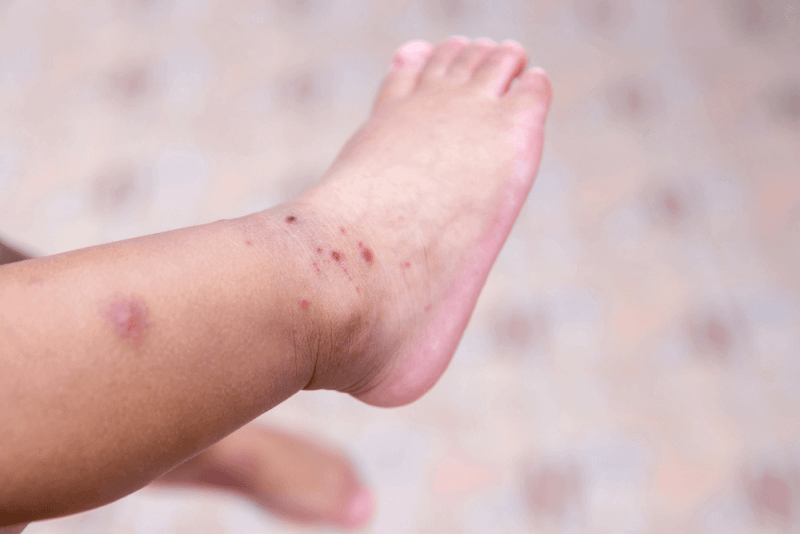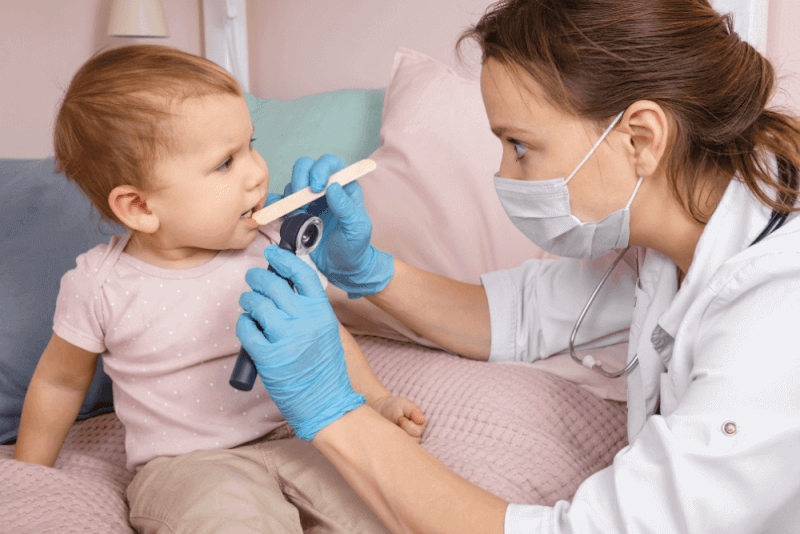What is Neonatal Jaundice?
Jaundice is a condition caused by an increase in a substance called bilirubin in the blood, leading to a yellow discoloration of the skin. It particularly affects newborns, occurring in about 60% of full-term babies and 80% of premature babies.
The common occurrence in newborns is due to their livers not being fully developed yet, preventing the bilirubin from being filtered from the blood. In some cases, liver damage or inherited liver diseases can also cause jaundice, which is why it's crucial to approach neonatal jaundice with caution and consider other possible causes.
Diagnostic Criteria for Neonatal Jaundice
The first criterion evaluated for diagnosing neonatal jaundice is the baby's skin color. A pediatrician assesses this initially during the examination. Due to the subjective nature of this assessment, it is necessary to measure bilirubin levels, which involves taking a small amount of blood from the newborn.
Causes of Neonatal Jaundice
Bilirubin is a substance that appears when old blood cells break down at the end of their lifespan. Normally, this substance is filtered by the liver and removed from the blood. However, in newborns, an underdeveloped liver can prevent sufficient filtration, leading to jaundice. The other reasons for jaundice affecting a significant number of newborns include the following.
- Certain enzyme deficiencies
- Internal bleeding
- Liver disorder
- Infection in the baby's blood
- Incompatibility between mother's and baby's blood
- Bacterial infections
- Viral infections
- Sepsis
- Blockage of the bile ducts
- Abnormal blood cell disorders such as sickle cell anemia
- Difficult birth
- Multiple pregnancies
- Older maternal age
Symptoms of Neonatal Jaundice
If a newborn baby has jaundice, the following symptoms may be observed:
- Yellowing of the skin
- Yellowing of the whites of the eyes
- Spread and darkening of the yellow color
- High fever
- Poor feeding
- Lethargy
- Excessive sleepiness
These symptoms typically appear 2 to 4 days after birth. To detect changes in skin color, gently pressing on the chest area of the baby is sufficient.
With an increase in bilirubin levels in newborns, there may be a worsening of the baby's sleepiness and significant deficiencies in feeding. Not feeding adequately can further increase bilirubin levels, resulting in a vicious cycle. If bilirubin levels rise too high and begin to affect brain structures, the baby may exhibit high-pitched crying, and continual throwing back of the head can be observed. This condition can progress to seizures, and if these symptoms are observed, there is a significantly increased risk of cognitive and motor delays in later stages.
Treatment Methods for Neonatal Jaundice
Generally, no treatment is applied for jaundice in newborns as it is an expected condition during this period, and the development of the liver often results in the jaundice resolving naturally. Thus, the recovery period for neonatal jaundice can last up to 2 weeks.
However, if the jaundice does not resolve on its own or if the bilirubin levels in the baby's blood are too high, different treatment methods need to be utilized.
Blue Light Therapy
Also known as phototherapy, this is the most commonly used treatment for neonatal jaundice. In this therapy, the baby is placed under a special light that emits blue and green spectrum light. The frequency of this light aims to reduce the bilirubin levels in the baby's blood.
In phototherapy, which has a special frequency range, the light breaks down bilirubin molecules, making them excretable through urine and feces. During the treatment, protective eye patches are used to shield the baby's eyes from the blue light.
Blood Exchange
Blood exchange is a treatment method used rarely, applied in cases of severe jaundice that do not respond to other treatments. It involves a blood transfusion.
This treatment, performed in neonatal intensive care units, dilutes maternal antibodies in the newborn's blood through small amounts of blood exchange.
Intravenous Immunoglobulin
This is a medicinal treatment option for neonatal jaundice. The medications used accelerate the elimination of bilirubin from the blood and also reduce its production.
Neonatal Jaundice Levels
As the bilirubin levels in neonates increase, the yellow coloring becomes more widespread on the baby's skin, starting from the head and spreading to the legs and arms. The bilirubin levels in newborns' blood and the areas affected by jaundice are as follows:
- Levels between 5 to 8 mg/dl show jaundice on the head and neck areas.
- Levels between 8 to 10 mg/dl show jaundice on the upper trunk.
- Levels between 10 to 13 mg/dl turn the skin on the lower parts of the trunk yellow.
- Levels between 13 to 16 mg/dl spread the jaundice to the arms and legs.
- Around 20 mg/dl, jaundice begins to appear on the hands and feet.
In newborns, no treatment is usually recommended if the bilirubin level is below 17 mg/dl. However, serious symptoms begin to appear if the level exceeds this value. The evaluation of bilirubin levels in newborns also considers the baby’s age and weight.
What Helps Relieve Jaundice in Newborns?
For rapid recovery from neonatal jaundice, it is recommended that the baby be breastfed frequently. Breastfeeding 10-12 times a day helps eliminate bilirubin through urine, which speeds up recovery from jaundice.
What Does the Stool of a Jaundiced Newborn Look Like?
If a newborn with jaundice has bilirubin levels within acceptable limits, their stool color will be appropriate for their age. However, if the bilirubin levels are dangerously high, the stool color will be white. If the baby is breastfed, the stool will be golden yellow or mustard color.
How to Tell if a Newborn's Jaundice Has Cleared
Indicators that jaundice has resolved in newborns include:
- The baby’s urine and stool return to a normal color.
- The yellow coloration in the baby's skin and eyes begins to fade and return to normal.
- The baby's weight gain curve increases.
- Feeding becomes regular.
- The baby’s energy levels increase.
- The baby stays awake for longer periods.
Types of Neonatal Jaundice
Jaundice in newborn babies is classified into five different types. These types include:
Physiological Jaundice (normal jaundice)
A significant part of the jaundice seen in newborns falls into this category. It is a type of jaundice due to the liver not being fully developed and typically appears on the second or third day after birth, resolving itself within 1-2 weeks.
Premature Jaundice
This type of jaundice occurs in babies born prematurely. Premature jaundice patients, who have the same bilirubin levels as those with physiological jaundice, require treatment, whereas babies with physiological jaundice at the same levels do not. Premature babies need to have lower values due to their incomplete development.
Breastfeeding Jaundice
This type of jaundice occurs if the baby does not get enough breast milk. To improve breastfeeding jaundice, it is necessary for the mother to receive breastfeeding training and breastfeed more frequently.
Breast Milk Jaundice
This type of jaundice, seen in babies who are breastfed, affects 1-2% of these infants and is a rare form. The increase in bilirubin levels in babies with breast milk jaundice is due to certain components in the breast milk. Breast milk jaundice appears 3-5 days after birth and can take 3-12 weeks to resolve.
Blood Group Incompatibility
ABO blood group incompatibility occurs when a mother with blood type O has a baby with blood type A or B. In these cases, the mother's body produces antibodies that break down the baby's red blood cells, leading to increased bilirubin levels. Neonatal jaundice caused by blood incompatibility usually begins on the day the baby is born and can be easily treated with anti-D injections. In some cases, phototherapy may be necessary.
What Should Be Done to Protect Babies from Jaundice and Its Harms?
Babies need to be examined for jaundice and other health risks after birth and before discharge. If signs of jaundice are observed, it is necessary to measure the bilirubin levels in the blood. Jaundice seen on the first day after birth often shows pathological features, thus requiring close monitoring.
Neonatal jaundice can reach its highest levels between the second and fifth days after birth. Therefore, babies discharged before completing 24 hours should be taken to a doctor on the third day. Babies who are 24 hours old should have a doctor’s appointment on the fourth day, and those who have been 48 hours should go on the fifth day. These checks will determine if the baby’s feeding is adequate and monitor their bilirubin levels.
If a baby is at risk for jaundice, daily monitoring of bilirubin levels is necessary to prevent them from rising to dangerous levels.
Which Babies Need Close Monitoring?
Although neonatal jaundice typically resolves on its own, some babies in certain risk groups need to be closely monitored for jaundice. Characteristics of these babies include:
- If jaundice appears within the first 24 hours after birth
- If jaundice lasts longer than two weeks
- If there is bleeding under the scalp at birth
- Premature babies
- Babies whose siblings required phototherapy for severe jaundice
- Babies who have feeding problems and do not feed well.







